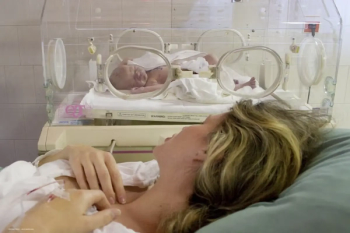
AAO 2025: John Berdahl, MD, on different lenses to consider in pseudoexfoliation
John P. Berdahl, MD, a surgeon at Vance Thompson Vision and professor at the University of South Dakota in the United States explored the complexities of lens implantation for patients with pseudoexfoliation at the 2025 American Academy of Ophthalmology meeting held in Orlando, Florida. His expert discussion delves into the nuanced selection of advanced intraocular lenses, addressing challenges related to glaucoma, contrast sensitivity, and surgical considerations while emphasizing personalized patient care and long-term visual outcomes.
Note: The following conversation has been lightly edited for clarity.
Ophthalmology Times Europe: You presented at the AAO 2025 meeting. Can you share what you highlighted in your presentation?
Berdahl: We're talking about pseudoexfoliation and which lenses can work in these patients. As we talked with the audience today, it was actually surprising to me, the audience felt like they all felt comfortable in proper situations doing standard mono-focal lenses, astigmatism correcting lenses, and even multi-focal and extended depth of focus lenses. As we talked about, there's a number of watch outs for these pseudoexfoliation patients. And there is some data out there too.
OTE: What does this informationshow?
Berdahl: The data says you can do it. It's just not as good, on average, as doing cataract surgery with these advanced lenses and standard cataracts. And that's obvious, but there actually is data to support our decision making. So toric, okay, multifocal is okay. Extended depth of focus is okay. Even just the lens is probably okay, but let's talk about a couple of nuances with that lens with pseudoexfoliation, besides the glaucoma and the propensity for it to be a little bit wobbly and maybe dislocate in the future, we want to make sure we've got a good, solid capsular bag, but we also need to make sure that the pupil is big enough for the light delivery treatment. Otherwise, when it comes to toric lenses, probably makes sense to put a capsular tension ring in there. So if, in the future, we need to come back and suture that lens to the wall, we've got a handlebar for it, and probably can keep the orientation in the right orientation. Same thing for multi-focals and even extended depth of focus lenses, where it's really important to get proper centration, that capsular tension ring probably helps. The data is loose on that. It certainly doesn't hurt, and it may help.
OTE: Can you eleaborate on any challenges treating glaucoma patients with these lenses?
Berdahl: Now, one of the big things that we need to think about in pseudoexfoliation, besides small pupil and, you know, a loosey goosey zonular system that could lead to a dislocation, is glaucoma. I think one of the things that we don't really think about in earnest is contrast sensitivity. We know glaucoma decreases contrast sensitivity, we know that multi-focals decrease contrast sensitivity, but what a lot of us don't know is how little multi-focals and EDF lenses decrease contrast sensitivity way less than glaucoma does. Mild glaucoma doesn't change contrast sensitivity very much at all. So if you had a multi-focal in a mild glaucoma situation, the stacking of those very small loss of contrast sensitivity likely doesn't translate into something that's clinically important. However, as you start to get to more moderate glaucoma, especially in a pseudoexfoliation situation, you're really not going to want to pursue one of these advanced technology lenses. That said a toric lens, I still believe is okay, because that patient is getting their touristity corrected one way or another, either with a lens inside their eye or with a pair of glasses afterwards. That doesn't have anything to do with contrast sensitivity. So in summary, carefully, thoughtfully, in a prepared way, we can use some of these advanced technology lenses in patients with pseudoexfoliation in an effort to help them use their eyes the way that they want to for the rest of their life.
Newsletter
Get the essential updates shaping the future of pharma manufacturing and compliance—subscribe today to Pharmaceutical Technology and never miss a breakthrough.













































